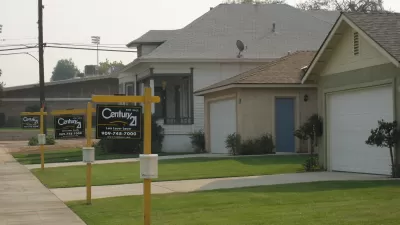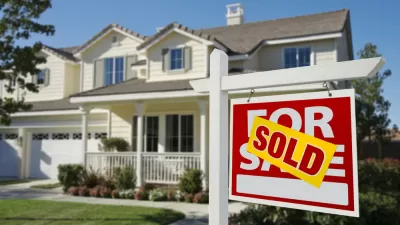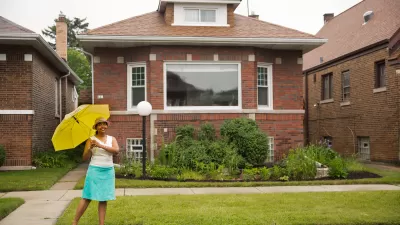Programs that help households of color buy homes haven't made much of a dent in the racial wealth gap. But some strategies could generate better outcomes for buyers.

Homeownership remains one of the most common tools employed to try to help Black families build intergenerational wealth. However, for reasons authors in this series have detailed, simply achieving the dream of buying a house often does not generate the results that it generates for white families. Households of color tend to own homes of lower value and have a higher percent of their assets in home equity, feeding into the disproportionately low share of wealth held by Black and Latinx households.
Housing advocates say that without significant policy and practice changes, both the racial homeownership gap and the racial wealth gap will remain wide for decades to come.
Race-Conscious Programs
One step is to actually target specific groups for support, rather than assuming that programs targeting low-income homebuyers will be sufficient. "When you are a policymaker, you are thinking about things that are good for all … but we didn’t get here because of policies that were good for all," stated Chrystal Kornegay, executive director of MassHousing, during a webcast in December 2021 hosted by the Urban Institute. MassHousing is an independent, quasi-public agency that lends over a billion dollars annually to produce and preserve affordable rental housing and to create homeownership opportunities for low- and moderate-income borrowers.
"You can’t have a race-conscious solution that doesn’t actually include race in it," she added.
Although programs to help people of color get into homes have been around for decades, Laurie Benner, associate vice president of programs at the National Fair Housing Alliance, says the racial homeownership gap is still prevalent because "none of the programs have been racially explicit."
There’s an idea out there that "because of fair housing laws . . . you can’t say 'This program is for this category of people,'" Benner adds, "but in fact, lenders can do it. They can create a loan program just for Black people, or Latino people, or for AAPIs, Indigenous people, and so on."
Through the Equal Credit Opportunity Act, financial institutions are permitted to develop special purpose credit programs (SPCPs) to meet special social needs and benefit disadvantaged groups. When properly designed, SPCPs can play a crucial role in promoting equity and inclusion, building wealth, and removing barriers that have contributed to housing instability and residential segregation.
So the resistance isn’t legal, it’s optics—a throwback to colorblind ideals. "We’ve seen lending programs for people with disabilities, and no one is outraged by that," explains Benner, "but if a lender were to introduce a mortgage program specifically for Black or Latino people, it would almost certainly be subject to legal challenge."
Benner adds that some banks have ...
FULL STORY: Making Homeownership Work Better

Planetizen Federal Action Tracker
A weekly monitor of how Trump’s orders and actions are impacting planners and planning in America.

Congressman Proposes Bill to Rename DC Metro “Trump Train”
The Make Autorail Great Again Act would withhold federal funding to the system until the Washington Metropolitan Area Transit Authority (WMATA), rebrands as the Washington Metropolitan Authority for Greater Access (WMAGA).

The Simple Legislative Tool Transforming Vacant Downtowns
In California, Michigan and Georgia, an easy win is bringing dollars — and delight — back to city centers.

The States Losing Rural Delivery Rooms at an Alarming Pace
In some states, as few as 9% of rural hospitals still deliver babies. As a result, rising pre-term births, no adequate pre-term care and harrowing close calls are a growing reality.

The Small South Asian Republic Going all in on EVs
Thanks to one simple policy change less than five years ago, 65% of new cars in this Himalayan country are now electric.

DC Backpedals on Bike Lane Protection, Swaps Barriers for Paint
Citing aesthetic concerns, the city is removing the concrete barriers and flexposts that once separated Arizona Avenue cyclists from motor vehicles.
Urban Design for Planners 1: Software Tools
This six-course series explores essential urban design concepts using open source software and equips planners with the tools they need to participate fully in the urban design process.
Planning for Universal Design
Learn the tools for implementing Universal Design in planning regulations.
Smith Gee Studio
City of Charlotte
City of Camden Redevelopment Agency
City of Astoria
Transportation Research & Education Center (TREC) at Portland State University
US High Speed Rail Association
City of Camden Redevelopment Agency
Municipality of Princeton (NJ)





























